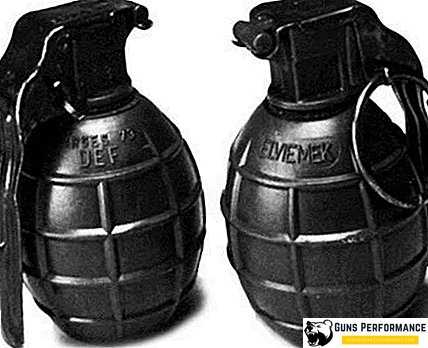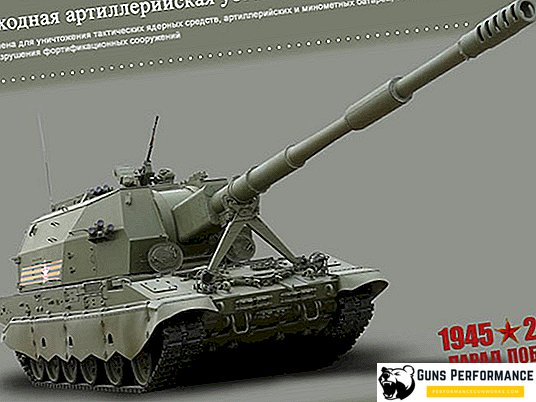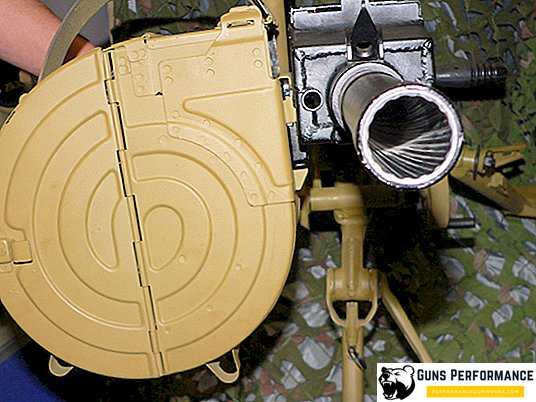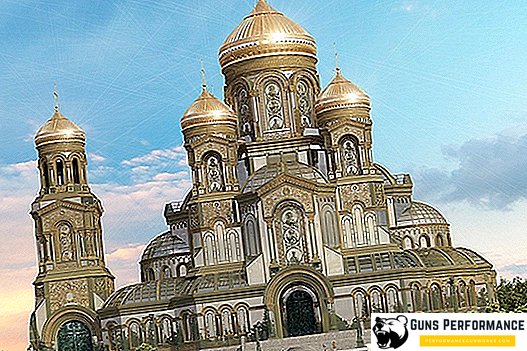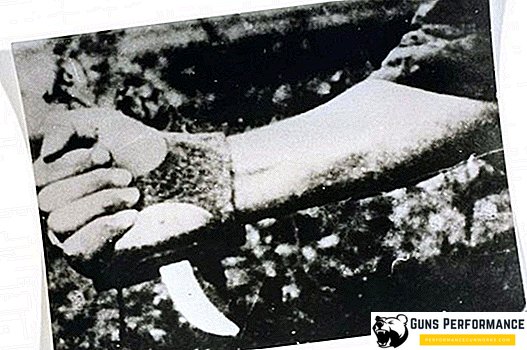None of the countries of the world has such a reverent attitude in the person of the emperor as in Japan. And this is despite the fact that the XXI century is in the courtyard, and the Land of the Rising Sun is among the most developed countries in the world. It is all about the mentality of the Japanese, who care about their history and honor ancient traditions. This is confirmed by the national holiday - the Day of the Founding of the State, celebrated annually on February 11. On this day, was born the first emperor of Japan, Jimmu, who ascended the throne in the VII century BC.
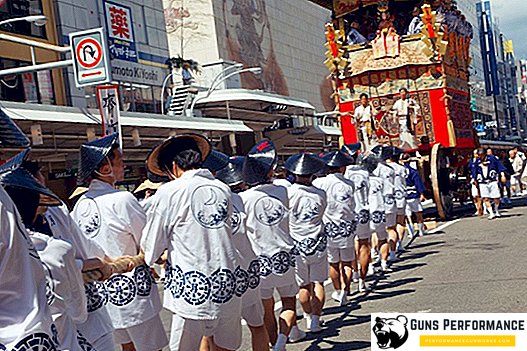
The place of the emperor in the history of the Japanese metropolis
Evaluating the imperial power in Japan, it is worth paying attention to the religious component. In accordance with ancient legends, the first sovereign ruler who occupied the imperial throne was a descendant of the gods. It was believed that only a person of divine origin can hold such a high post and only in his power to unite a fragmented country under one authority. The divine nature of the emperor was a very convenient tool for the manipulation of society. Any encroachment on the authority of the emperor and criticism of his actions were regarded as blasphemy.

Strengthening the imperial power in Japan and contributed to the separate geographical position of the country. The population of the Japanese islands, protected by the sea from external enemies, has managed to keep intact their long-standing traditions, culture, religion and history. For a thousand years, the post of the emperor of Japan and the metropolis itself remained. According to some data, the age of the Japanese ruling dynasty is 2600 years old. In this regard, the Imperial House of Japan is the oldest royal ruling dynasty in the world, and the empire can claim the title of the most ancient state.
For comparison, the preserved monarchical dynasties of Europe are just over a thousand years old.
The origins of the oldest monarchy in the world are rooted in the VII-VI century BC. The first emperor of Japan is considered to be Jimma, whom the gods entrusted to subordinate to their will the population of the Japanese islands. The first emperor of Japan, as well as the subsequent eight emperors, who were at different times on the imperial throne of the Land of the Rising Sun, is attributed to a semi-legendary origin.

The first real person with whom the Japanese associate the foundation of the Imperial House on the Japanese Islands is the Emperor Sujin. The years of the reign of Emperor Sujin - 97-29. BC. In official documents that have come down to our times, he is mentioned as the creator of the first Japanese centralized state of Yamato, which became the center of the metropolis for the next 2000 years. The tenth in the list, but in reality, the first real emperor of Japan, Sujin, like his predecessors, dates back to the Yayoi era. It should be noted that, in contrast to Europe, where the periods of rule of one or another dynasty are connected with the duration of a clan, on the Japanese islands the period of the rule of one or another dynasty personified an entire era. The name of the era corresponded to the motto under which the representatives of one dynastic line ruled.
Upon accession to the throne, the emperor was called "Tenno Heik" - His Majesty the Emperor, his lifetime name was not officially used. In consequence, the title of emperor was overgrown with new names that came from China and have a religious connotation. Only after the death of the reigning person, the posthumous name was added to the title of emperor. This was done in order to emphasize the divinity of the monarch's lineage.

Despite the fact that the title of the most ancient ruling dynasty was attributed to the Japanese Imperial House, the title of Emperor gained official status only in the 6th - 7th centuries. He came to Japan from China. This initiative is attributed to monks who have developed a legal mechanism of supreme power for central Japan. The main emphasis was placed on the inextricable link of the emperor's high life with his divine nature. The person who entered the throne at the same time became not only a person endowed with the highest secular authority, but was also a high priest. Such a mechanism allowed to achieve the full legitimacy of the imperial power in the country.
From this point on, the regalia of the imperial power have their origin:
- sword (symbolizing courage);
- necklace of precious stones (jasper - a symbol of wealth and prosperity);
- mirror (personifying wisdom and maturity).
These symbols have been preserved throughout the history of the reign of the imperial house of Japan and have survived. They were entrusted to the crowned personage during the ceremony of succession and were transferred from one emperor to another.

Epochs of the Japanese Emperors
The era of Yayoi and all the emperors who occupied the reigning throne during this period can be called legendary. The imperial power acquired a real and significant place in the history of Japan only in the 5th and 6th centuries, with the advent of the Yamato era (400-539). At this time, the process of forming the first centralized state on the Japanese islands around the Yamato region took place. Since then, Buddhism has been actively spreading in the country, and external relations are being established with Korea and China.
The Yamato epoch in historical sources is mainly associated with the reign of two emperors: Yuryaku (government years 456 - 479) and Keitai, who ruled no less - from 507 to 531 years. Both monarchs are credited with the merit of strengthening the imperial power in the country and the growing influence of Eastern religious teachings: Taoism, Confucianism and Buddhism. All the emperors of the Yamato era adopted Buddhism, and Taoist ceremonies were actively introduced in the Imperial House.

In the era of Yamato, the principle of succession was finally formed. The imperial title will inherit the eldest son of the reigning person. Only descendants of the emperor in the male line have the right to the throne, but often women became regents for minor rulers. In Japan, in contrast to other states, the title of regent practically corresponded to the title of emperor, therefore in the history of the Japanese state there are cases when a woman held the imperial title. In the official chronicle of the Imperial House "Annals of Japan" are mentioned:
The Age of Asuka (539-715):
- Empress Suiko;
- Empress Kogyoku - Simei;
- Empress Zito;
- Empress Gemey.
Epoch of Nara (715-781):
- Empress Gensho;
- Empress Koken - Shotoku.
Edo Epoch (1611-1867):
- Empress Meisho, reigned from 1629 to 1643;
- The Empress Go-Sakuramati (1762 - 1771).
The first empress became Suiko, who occupied the divine throne for 35 years (593-628), being the regent of her nephew Shotoku. During the years of her reign, the first empress officially made Buddhism the main religion in the country. Among its merits, the adoption of the first official laws in the history of Japan is the Statute of 17 articles.
The second woman who ascended the throne is Kogeoku-Saimai. This woman managed to twice hold the highest state title in the country. The first time she became empress in February 642, and lasted on the throne until the summer of 645 years. The second time this woman wore the title of Empress in 655-661. The presence of representatives of the weaker sex in the imperial palace is an exceptional fact for Japan. The third representative of the beautiful sex that became the empress is Gammei. Years of the rule 707-715 years.

Empress Gemmey is credited with the initiative to create the first official chronicle documents about the ruling dynasty. Under her patronage in the year 720, the Japanese chronicles appeared - The Annals of Japan.
The last persona of the female who bore the highest title was the Empress Go-Sakuramati, who entered the throne in 1762 and ruled for 9 years. The end of the possibility of women to carry the highest title in the Japanese Empire put the Statute of the imperial family, adopted in 1889. It was not possible to edit two terms in a row due to the peculiarities of the Regen system of government, but two women, Empress Koken and Kogyoku-Simei, managed to put on the imperial crown twice.
With the Yamato era on the Japanese islands, the gradual development of the state begins in the form in which we perceive Japan today. The metropolis, to which the power of the emperor extends, has expanded within its borders. Virtually all regions and districts of the country at one time or another became the possessions of the Japanese emperors. With the emperor Kimmei (539-571), the Asuka era begins. During the 6th-8th centuries, 15 emperors visited the imperial palace on the throne, including three women - the empresses.

A distinctive feature of this era is the introduction of the slogans under which the emperor exercised government by the state. The reign of each emperor was considered an era, which emphasized the role and importance of the person in his post.
In the VIII-IX centuries in Japan came the era of Nara, which is characterized by the strengthening of state power in the country. Japan has become a full-fledged state entity with its own laws, government bodies and territorial divisions. During this period, the Emperor's Birthday became a national national holiday. Admittedly, this tradition, one of the few, has been preserved to this day. Despite a short period, in the era of Nara, the emperor gained the status of a full and sole sovereign. The authority and powers of the ruling personage spread throughout the metropolis. The imperial palace, which was located in the ancient capital of the state of Yamato, the city of Kyoto, became the permanent location.

The Heian Epoch (781-1198) is considered in Japanese history to be the most dramatic period marked by political and social instability. For a variety of reasons, the imperial power began to lose its unshakable authority, becoming a convenient tool for manipulating the game of large clans and parties. Gradually, the regents and advisers, representing the most noble families, began to govern the country on behalf of the emperor. The emperor turned into a nominal ruler, who had only the right of an advisory vote. In the Heian era, 33 emperors changed in the imperial palace. The years of government of many of them are characterized by frequent palace coups and plots. In view of the complex internal political situation, the fate of many monarchs was tragic. The beginning of the decline of the Imperial House was the formation of the shogunate - an alternative government, which included noble grandees and samurai. Attempts by supporters of strong imperial power in an armed way to regain lost positions in power ended in a cruel defeat.
The orders of the emperor and the decrees had a representative character and concerned mainly state rituals and palace ceremonies. The imperial treasury was almost empty, and the imperial court itself existed due to the sale of titles, noble titles and government positions.
A similar picture was observed in the Kamakura era (1198-1339). The first attempt to regain lost positions in state administration was made by the emperor Go-Daigo. His reforms were aimed at restoring the model of public administration of the Nara era. With the defeat of the shogunate, an acute military-political crisis began in the country, culminating in the division of the Imperial House into two dynasties — the Northern and the Southern. For the next three hundred years, the imperial power in the country was in decline. The reign of the representatives of the Northern branch of the imperial house was replaced by the Muromachi era, during which the crisis of the supreme power in the country only intensified. The ensuing Edo era eventually brought the Imperial House out of non-existence. In the XIX century, the imperial power becomes one of the fundamental symbols of the state. Transformations in the public administration system contribute to the transformation of Japan into the Empire.
Japanese emperors in the new time
Emperor of the 122nd Emperor Meiji is considered the first royal monarch, under which Japan received the status of the Empire. During the years of government from 1867 to 1912, Japan under his leadership has achieved tremendous success. The country emerged from foreign policy and economic isolation, beginning to actively inculcate Western values on the ground and in society. This rise was promoted not only by the personality of Emperor Meiji himself, who ruled under the motto of enlightened government, but also by drastic reforms of public administration, the banking sector and the economy. In 1889, Japan received its first Constitution in its history, which became one of the very first in the Asia-Pacific region.

In accordance with the text of the Constitution, the emperor was the head of the supreme power in the empire, had immunity and was equated with a deity. The duties of the Emperor included the control of all public authorities. The orders of the monarchs were worn by the laws that were to be approved by the Parliament of the country. The goals and objectives set by the Japanese emperors over time, Meiji, become the basis of state foreign policy, which are fixed at the level of legislative acts.
The emperor had the right to convene and dissolve parliament, was the Supreme Commander of the Armed Forces of the Empire and the first person of the executive power in the country. From now on, emperors were in charge of granting titles and titles, making decisions on appointments to government posts. The emperor could, by his decision, declare war, impose martial law, and conclude military and political alliances on his behalf.

The reign of Emperor Meiji became an important epoch in the development of the Japanese state, having received the same name - the Meiji era. In the 20th century, after the death of Emperor Meiji, 2 persons occupied a place in the residence, with the brightest and most tragic moments in the history of Japan:
- The 123rd emperor of Japan, Taisho, who bore the life-long name of Yoshihito and occupied the throne in 1912-1926 (the era of government is great justice);
- Japan's 124th Emperor Showa, who ruled for almost 72 years, from 1926 to 1989. Hirohito's lifelong name (the era and motto of the government is the enlightened world).

Under Emperor Hirohito, the Japanese Empire participated in World War II on the side of Nazi Germany. The participation of Japan in the world conflict as an aggressor led the country to a crushing defeat and put Japan on the brink of disaster. As a result of defeat for the first time, the question arose of whether the Emperor voluntarily renounced power. This was one of the conditions for the surrender of Japan in the war imposed by the allies. However, as a result of lengthy negotiations, the emperor managed to retain the supreme power in the country. The new, post-war Constitution of 1947 made it officially the nominal head of state, depriving divine status.
From that moment on, a full constitutional monarchy was established in the country, similar to that which operates in the United Kingdom, Great Britain, in the Kingdom of Sweden and in the Netherlands. From now on, the emperor is in no way involved in the management of public affairs. All powers in domestic and foreign policy passed to the Cabinet of Ministers, headed by the Prime Minister. The monarch is defined representative functions and a dominant role in state ceremonies.

The competence of the emperor left the right to submit the candidature of the Prime Minister and the Head of the Supreme Court to the Japanese Parliament. As a legislative initiative, the monarch may submit to Parliament for consideration amendments to the current legislation. The emperor of Japan has the right to:
- proclaim the election of deputies of Parliament;
- approve the appointment of ministers and civil servants;
- grant amnesty;
- receive credentials of ambassadors of foreign countries.
The disposition of the property of the Imperial House is carried out only with the approval of the Cabinet of Ministers, and the maintenance of the court is approved at the level of the country's budget. Under the new Constitution, the monarch lost the functions of the Head of the Armed Forces of the country, who had passed in the introduction of the Prime Minister.
Emperor Hirohito wore his title the longest in the history of the country. In 1989, after his death, the imperial throne was taken by his eldest son Akihito, who at that time was 53 years old. The solemn inauguration or coronation of the 125th Emperor of Japan took place on November 12, 1990.

Today, Emperor Akihito is already 84 years old. The head of the Imperial House has a spouse - Empress Michiko and three children. The main heir is the eldest son of the emperor - the crown prince Naruhito. In accordance with the new law adopted by the Japanese parliament in 2018, the current ruling emperor has the right to voluntarily abdicate in favor of his eldest son.
Residence of emperors of Japan
Today, the reigning emperor of Japan, along with his royal family, lives in the palace complex of Koiko, which is located in the very center of the Japanese capital. Despite its location, the Imperial Palace is a real fortress, as it is built on the site of a medieval Edo castle. Резиденцией Императора Японии дворец Койко стал в 1869 году, с того момента, как император Мэдзи перенес свой двор из Киото в Токио.

Дворец во время Второй Мировой войны подвергся серьезным разрушениям и был восстановлен только в 1968 году. Новый дворцовый комплекс является самой крупной действующей резиденцией главы государства в мире. По давней традиции здесь же находятся приемные покои императора, где глава государства проводит официальные встречи и церемонии. В дни рождения императора и в самые крупные государственные праздники часть дворцового комплекса открыта для посещения туристов.


